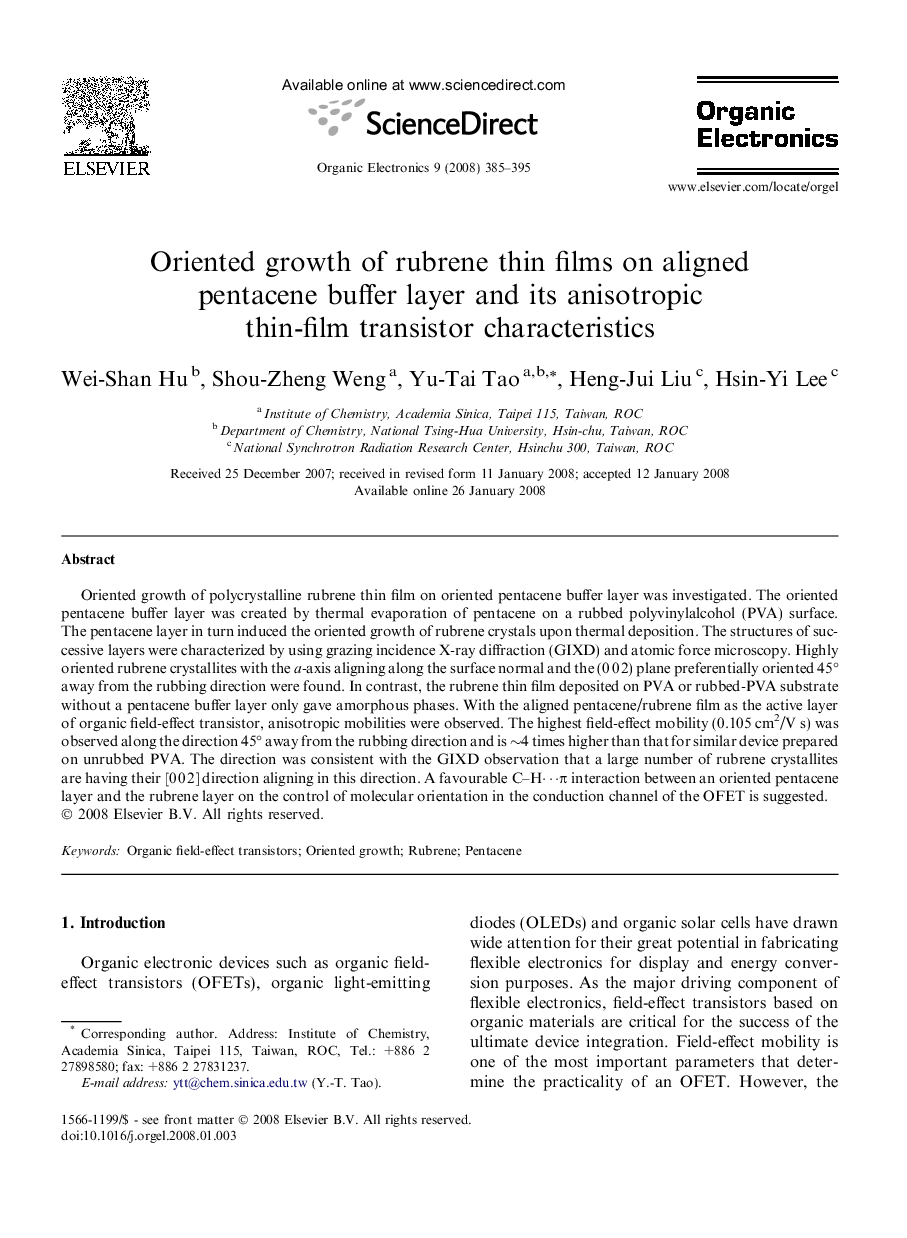| Article ID | Journal | Published Year | Pages | File Type |
|---|---|---|---|---|
| 1264388 | Organic Electronics | 2008 | 11 Pages |
Oriented growth of polycrystalline rubrene thin film on oriented pentacene buffer layer was investigated. The oriented pentacene buffer layer was created by thermal evaporation of pentacene on a rubbed polyvinylalcohol (PVA) surface. The pentacene layer in turn induced the oriented growth of rubrene crystals upon thermal deposition. The structures of successive layers were characterized by using grazing incidence X-ray diffraction (GIXD) and atomic force microscopy. Highly oriented rubrene crystallites with the a-axis aligning along the surface normal and the (0 0 2) plane preferentially oriented 45° away from the rubbing direction were found. In contrast, the rubrene thin film deposited on PVA or rubbed-PVA substrate without a pentacene buffer layer only gave amorphous phases. With the aligned pentacene/rubrene film as the active layer of organic field-effect transistor, anisotropic mobilities were observed. The highest field-effect mobility (0.105 cm2/V s) was observed along the direction 45° away from the rubbing direction and is ∼4 times higher than that for similar device prepared on unrubbed PVA. The direction was consistent with the GIXD observation that a large number of rubrene crystallites are having their [0 0 2] direction aligning in this direction. A favourable C–H⋯π interaction between an oriented pentacene layer and the rubrene layer on the control of molecular orientation in the conduction channel of the OFET is suggested.
